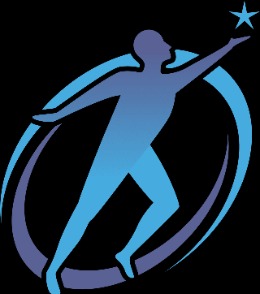People don’t buy products; they buy how products make them feel. If your website doesn’t mirror the exact emotion your buyer is seeking, you’re taxing their attention and your conversions. This article shows you how to design for feeling first—then let logic, proof, and structure seal the deal.
People Buy Feelings—Make Your Website Reflect Them
Folk kjøper følelser – nettsiden må speile det. Your visitors arrive with a quiet, specific emotional goal: certainty instead of chaos, relief instead of friction, status instead of sameness, momentum instead of procrastination. In five seconds they decide: “Is this for me? Do I feel understood? Do I trust this?” That’s why your hero section must operate like a sharp ad—clarity, tension, promise, proof, and a simple next step. Treat above-the-fold like a high-intent billboard that earns you the next scroll with a single, emotionally precise claim.
Build that claim on a simple fill-in brief so your copy is anchored to a real buyer, not your internal consensus. Start by completing these blanks: Product/service: [fill in]. Target audience: [fill in—demographics, interests, pains, buying behavior]. Platforms: [e.g., TikTok, Meta, Google, Snapchat, email]. Style and tone: [e.g., playful, authoritative, warm]. Campaign goal: [e.g., sales, leads, downloads, awareness]. USP: [fill in]. Specific requirements: [must-include messages, CTA]. This forces discipline: no fluff, no vague benefits—just the outcome they crave, described in their words, delivered with your difference.
Now translate that brief into conversion copy that behaves like a conversation. Hook: a scroll-stopping opening line that frames the feeling (“Stop guessing. [Product] turns [pain] into [desired feeling] in 7 days.”). Identification: name their lived moment without blame (“Still juggling [tool soup] and missing deadlines?”). Solution: the shortest path (“Connect. Automate. Relax.”). USP: the non-negotiable wedge (“Only [Product] blends [X] + [Y] with [proof].”). Emotional amplifier: show the after state (“Imagine Friday with nothing overdue—and your team smiling.”). CTA: direct, visible, and urgent (“See why” / “Book free consult”) with smart tension (“Only 3 projects onboarded per month”). Wrap it in instant trust (SSL/GDPR badges, Norwegian hosting if relevant, real faces, onboarding guarantee) so the promise feels safe to accept.
Design for Emotion: Win Trust, Time, and Conversions
Emotion isn’t decoration; it’s a system. Visuals drive gut feel (human faces, clean space, premium color/typography), copy builds meaning (verbs, outcomes, stakes), proof reduces risk (logos, numbers, screenshots, before/after), and structure preserves attention (one job per section, one CTA per viewport). Show numbers buyers care about: time back (“Save 8 hours/week”), risk reduced (SLA, guarantees), and ROI math (“1 lost client costs 10× your site”). Broadcast status and safety simultaneously: “Trusted by [credible clients], ISO/GDPR-ready, Norwegian data residency.” And respect the scarcity that matters: attention. Your first five seconds should answer who it’s for, what it does, and why it’s different—without scrolling.
Turn your brand message into platform-native micro-assets so emotion travels with consistency. TikTok Boost (sub‑7s): “The site that books clients while you sleep—watch” or contrast shock (“Your website is quietly losing 40% of leads—here’s proof.”). Google Ads Mini: Headlines up to 30 chars—“Stop Leaky Websites,” “Premium Sites. Real ROI,” “Book Free Consult.” Descriptions up to 90 chars—“Win trust in 5s. See live cases.” “Only 3 new builds/month. Apply now.” Email Hook: Subject under 50—“Your site is costing you clients.” Preheader under 80—“Proof inside + a two‑minute fix.” Psycho-tailored variants: Safety-seeker—“No surprises. Clear scope, fixed price.” FOMO-driven—“Competitors just upgraded—see how.” Analyst—“41% more leads in 30 days—method below.” Social—“Share this teardown with your team.”
Ship three creative flavors to match buyer readiness—and test them. AIDA classic: Attention (pain + tension), Interest (demo the mechanism), Desire (future state), Action (CTA + scarcity). Funny/satirical: “Your site loads like it’s on dial‑up. Your buyers don’t.” Short/punchy (max three sentences): “Your website isn’t neutral—it’s leaking trust. We fix that in 30 days. Book a free consult.” Bake in conversion tech that feels like service: sticky “Contact us” / “Book free consultation,” a two-choice menu (Services / Contact), “We migrate everything—zero downtime” onboarding guarantee, and an availability cap (“Only 3 projects/month”). Then measure what feelings win: hook lift, scroll depth to proof, click-to-book rate, and win/loss notes. Emotion earns attention; structure earns action.
Make your site feel like the outcome your buyer wants, then prove it with numbers, faces, and focus. Lead with emotion, follow with evidence, and remove every ounce of friction from “I’m curious” to “I’m in.” The brands that do this don’t shout louder—they convert faster.
